Constructing Your Personal Cannabis Grow Room: A Step-by-Step Guide
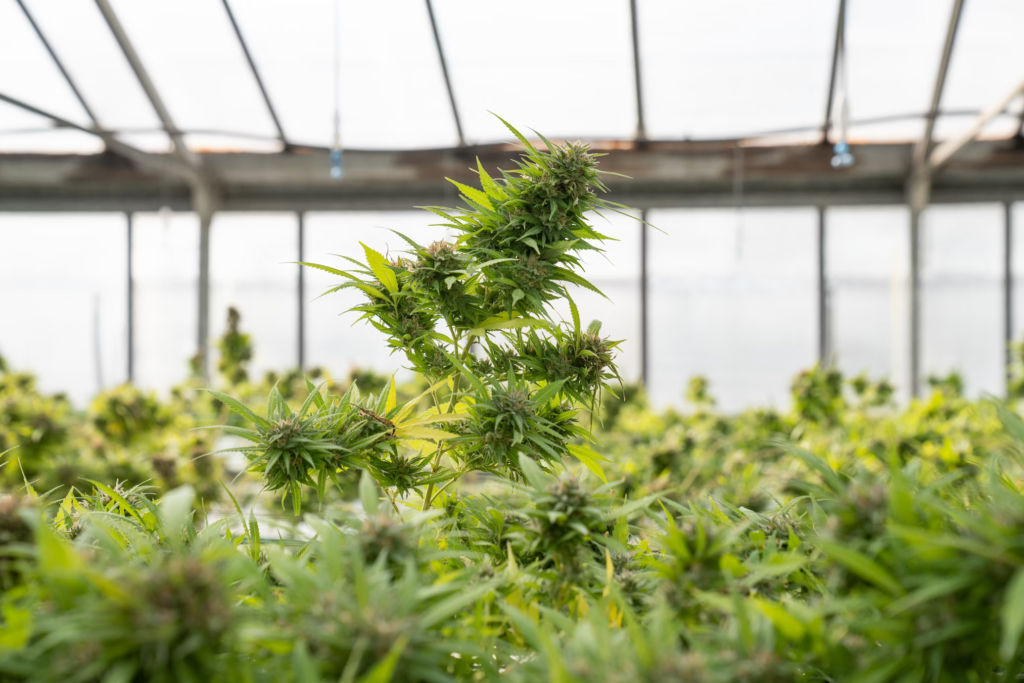
Embarking on the journey of cultivating your own cannabis at home is a commendable choice. Congratulations! By growing your own cannabis, you not only ensure a consistent supply of high-quality weed, but you also develop a deeper appreciation for the plant and experience a profound sense of accomplishment. Engaging in gardening activities has been well-documented to provide benefits akin to meditation, fostering a sense of well-being, and even aiding in the alleviation of anxiety and depression.
Establishing a dedicated space for cannabis cultivation is essential when growing at home. To ensure a bountiful harvest that sustains you between growing cycles, it is recommended to have a minimum area of 1m². This space can accommodate multiple smaller plants or one or two well-trained, or even scrogged, larger plants. The choice is entirely yours; the ultimate yields are comparable, with the decision revolving around whether you prefer a greater variety with smaller yields per plant or fewer varieties with larger yields per plant. It ultimately depends on your personal preferences and goals.
The vertical space in your grow room is determined by the available area and the type of lighting being utilized. Most styles of grow lights can effectively cover a single square meter. When using fluorescent lights, less height is needed since the lights can be positioned closer to the plants throughout the growth cycle. On the other hand, HID lights require more distance to prevent light burn and excessive heat accumulation. While you may have the desire to use a powerful 1000W HID light, it won’t be feasible without adequate vertical space.
Choosing the Ideal Space for Your Cannabis Grow
Finding a conveniently accessible spare square meter within your home or apartment is possible for everyone. Various areas such as spare rooms, attics, basements, cupboards, and walk-in closets can be transformed into suitable grow spaces. It is crucial to prioritize discretion during space selection, taking into account factors such as fan noise, light hum, and odor control. For instance, attaching an oscillating fan to a shared partition wall could disturb your neighbors due to the noise and vibrations transmitted.
Ensuring Light Sealing for Your Cannabis Grow Space
Ensuring a completely light-proof environment within your grow room is of utmost importance. Firstly, light leakage can be bothersome due to the intense brightness of grow lights. If your grow room is situated in a bedroom cupboard or a corner of an occupied room, light leakage can disturb your sleep during nighttime. At its worst, it can inadvertently expose your cannabis cultivation activities to the entire neighborhood.
Secondly, light leakage into the grow room can have detrimental effects on plant growth and performance. Once the plants have transitioned to the 12-12 day/night cycle for flowering, even slight light leakage can confuse the plants and result in reduced yield, hermaphroditism, or failed crops due to light-induced stress. While growers remain vigilant in identifying male plants, overlooking a few concealed “bananas” on female plants can ruin an entire crop by triggering unwanted seed production.
After setting up your grow space, it is important to conduct a thorough test by turning on the lights and inspecting for any signs of light leakage. Any cracks or openings that allow light to escape will also enable light to enter. If you discover any such leaks, promptly address them by using light-proof tape available at hardware stores or by applying at least two layers of gaffer tape. Keep in mind that gaffer tape, even the black variety, is semi-translucent, so a single layer won’t suffice.
It is worth noting that certain electrical equipment found in a grow room, such as dehumidifiers, may feature bright micro-LED lights that can cause damage to plants similar to environmental light leakage. To ensure complete darkness during nighttime, place a piece of tape over the lights of such appliances. While the subdued light of a full moon outdoors can have beneficial effects on plant growth, replicating this effect in an indoor grow setting is challenging.
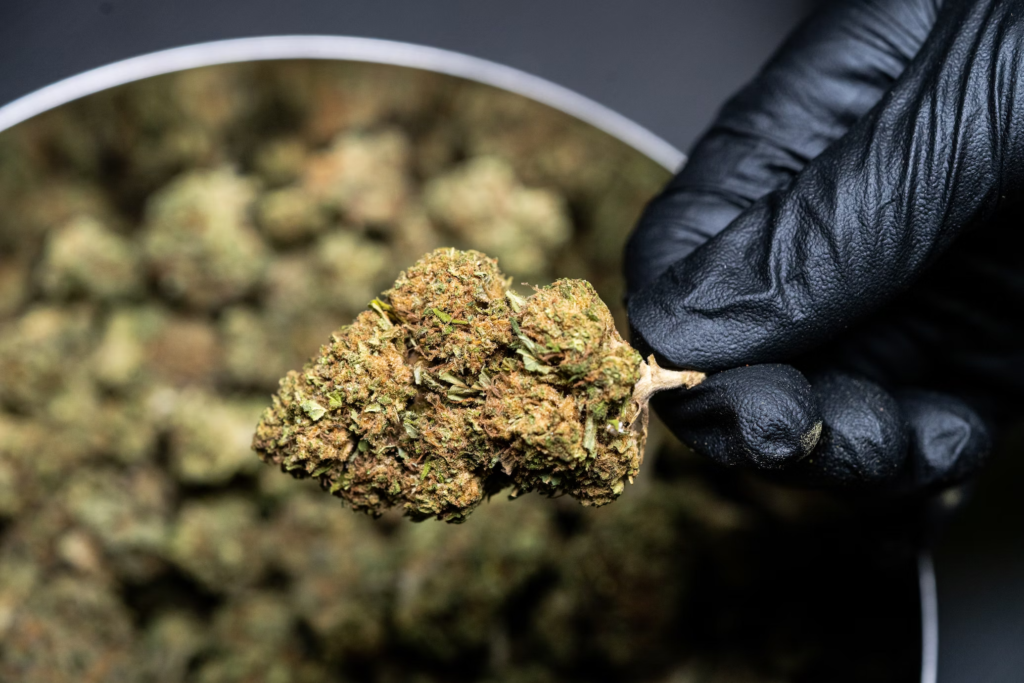
Ensuring Effective Airtightness for Your Cannabis Grow Space
As cannabis matures and develops resinous, plump buds, it emits distinct aromas—plain and simple. Some strains possess an overpowering scent that can permeate an entire room, a whole house, or even a street. It is easy to become accustomed to the delightful fragrance when frequently visiting your plants, leading to the mistaken belief that the smell doesn’t extend beyond the grow room. However, this couldn’t be further from the truth. A well-sealed grow room is essential to prevent odors from disturbing your neighbors or fellow inhabitants.
Furthermore, a properly sealed grow room simplifies climate control. Maintaining optimal temperature and controlling humidity levels rely on a sealed environment free from drafts. A stable environment plays a crucial role in ensuring optimal plant growth and performance. Additionally, a well-sealed room acts as a quarantine cell for your plants, safeguarding them against pests, rodents, and airborne pathogens. Even a single mouse can cause significant damage to cannabis plants in just one night, especially targeting nutrient-rich cotyledons and young stalks.
It is important to acknowledge that while an airtight grow room serves as a cost-effective solution, investing in an air exchange system can greatly benefit the quality of your cannabis and prove to be a worthwhile long-term investment. However, airtight grow rooms offer the perfect environment for experimenting with CO₂ enrichment, which can significantly enhance plant performance.
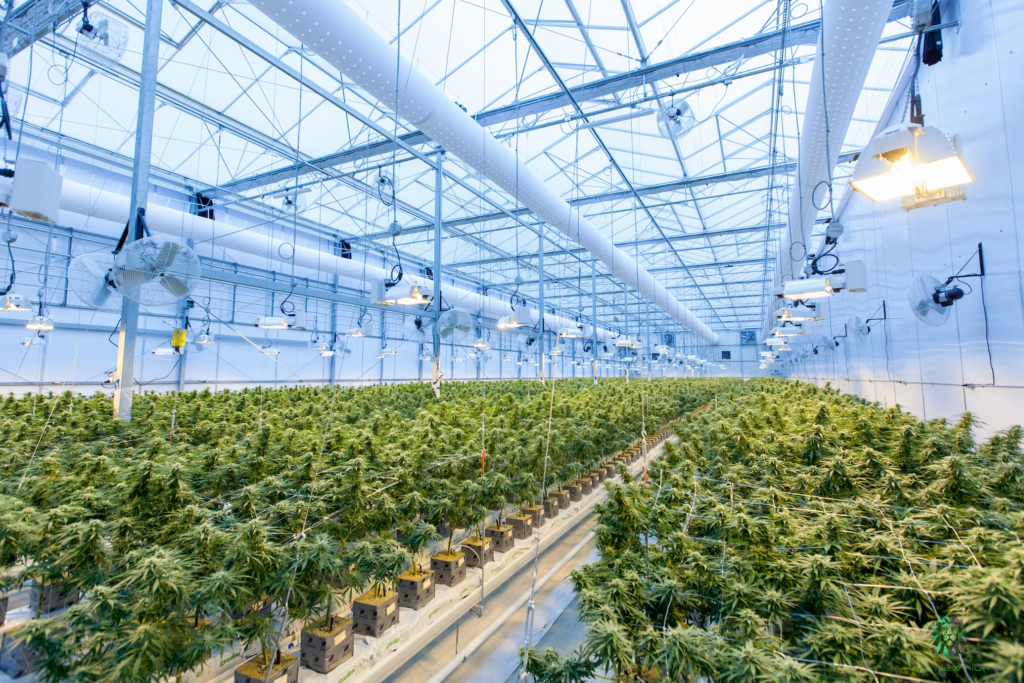
Optimizing Air Circulation for Successful Cannabis Growth
Proper air movement is vital for the health of cannabis plants. To ensure continuous circulation, every grow room should have at least one oscillating fan. The movement of air offers numerous benefits for cannabis cultivation.
At the very least, the air should gently rustle all the leaves of the plants, guaranteeing a fresh supply of air reaches the leaf stomata. In stagnant environments, stagnant air can accumulate around the stomata on the undersides of leaves, impeding efficient gas exchange. This undesirable scenario hampers plant growth, resulting in weak stems, drooping leaves, and overall poor performance.
Effective air circulation provides substantial benefits to plant development, leading to stronger and sturdier stems and stalks, ultimately resulting in higher yields.
Furthermore, moving air plays a crucial role in supporting the wet-dry cycle of the growing medium by facilitating evaporation. It also helps prevent the development of pathogens resulting from moisture accumulation on transpiring leaves. Molds, in particular, thrive in warm and moist environments, making adequate airflow even more essential in preventing their growth.
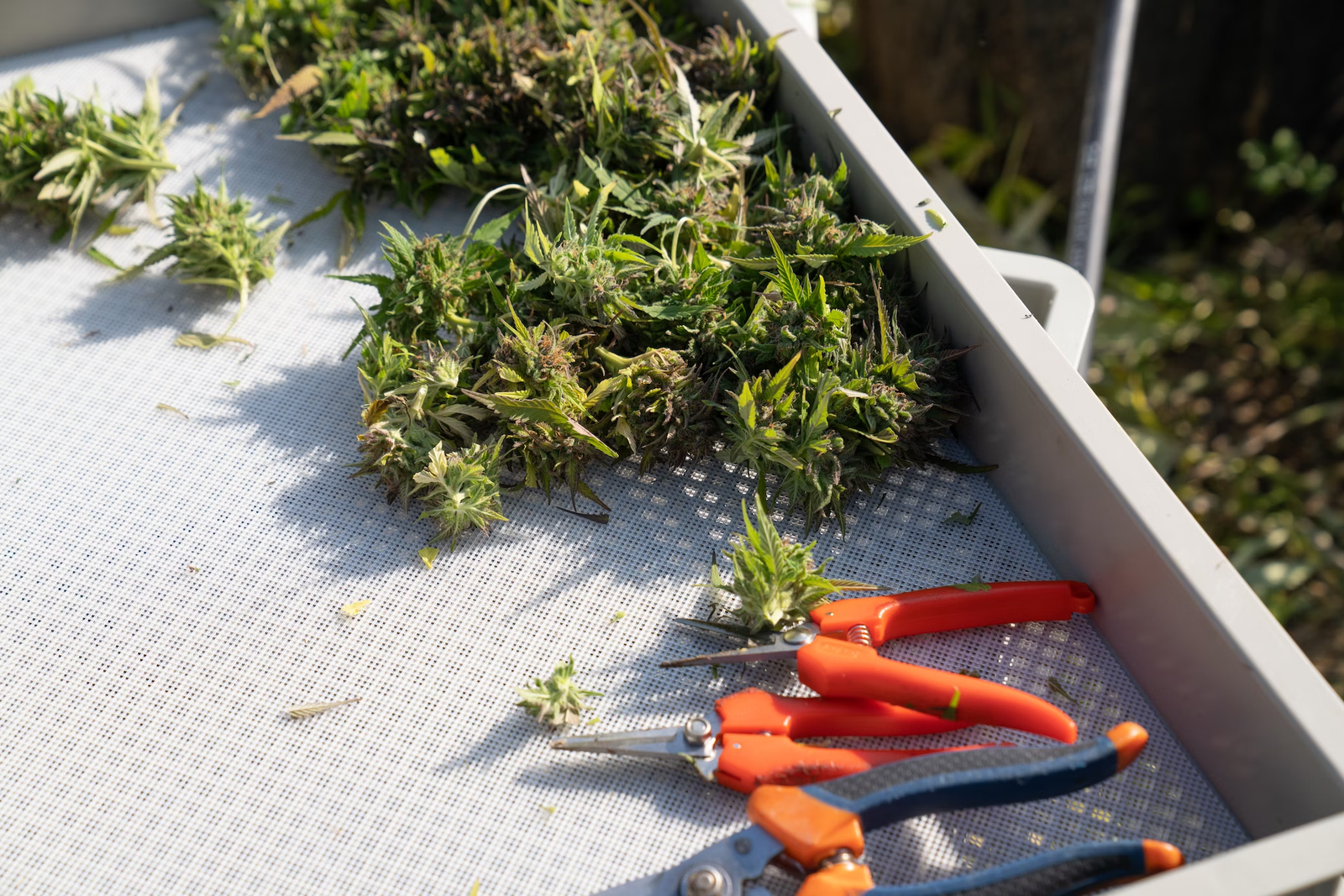
Optimizing Air Exchange for Healthy Cannabis Growth
Enhancing the growth of cannabis plants can be achieved by investing in an air exchange system, which proves beneficial for better results. An effective air exchange system consists of both an inlet to bring in fresh air and an exhaust to remove depleted air. For those with a higher budget, incorporating a carbon filter into the exhaust system helps minimize any unpleasant odors.
Air inlets, typically positioned in the lower part of the grow room, can take various forms and are usually located in the floor (if raised) or in a wall. When adding perforations to the grow room, it is important to consider light control. While a simple slot, vent, or series of holes can provide sufficient air intake, they may not be discreet in terms of light leakage. To address this, using a piece of ducting with a bend or implementing a double wall arrangement can effectively prevent light from escaping. Remembering that light cannot go around corners simplifies the task of creating a discreet setup. Additionally, it is advisable to incorporate a vermin barrier to deter any unwanted critters from entering and feeding on your precious cannabis plants.
An essential component of an air exchange system is the air outlet or exhaust, ideally equipped with a carbon filter. The exhaust system plays a crucial role in removing depleted air and heat from the grow room while drawing in fresh air. Whenever possible, it is preferable to exhaust the air outdoors to prevent the accumulation of heat in enclosed spaces. Alternatively, recirculating the same air back into the system can also be considered. However, this can present challenges, and the use of ducting becomes instrumental in solving air distribution issues.
The capacity of the exhaust fan depends on the volume of the grow room. Calculating the volume by multiplying the length, width, and height of the space provides the necessary information, and the manufacturer’s recommendations can guide the selection of an appropriate fan size. It is advisable to choose a slightly larger fan to ensure effective air exchange and accommodate any potential expansion of your grow operation.
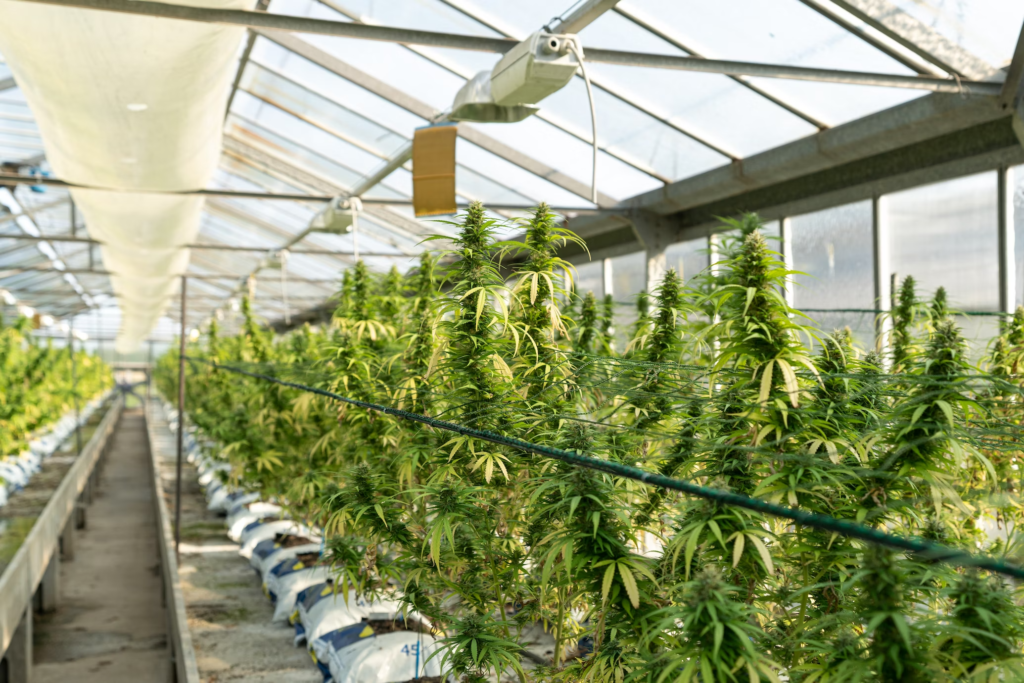
Optimal Climate Management for Cannabis Cultivation
Optimizing humidity and temperature levels is crucial for the successful cultivation of cannabis. Different stages of growth require specific climate parameters to ensure optimal results.
Humidity can be effectively regulated using dehumidifiers, which are also available as versatile units capable of both adding and subtracting humidity as needed. During the vegetative stage, a warm and humid environment promotes rapid growth, while lower humidity levels and temperatures support bud development during the flowering stage.
Portable reverse cycle air conditioning units are ideal for temperature control. Many humidity-modifying units and heaters come equipped with built-in thermostats and hygrometers, automatically activating or deactivating as per environmental requirements. By setting up these automated systems, you can have peace of mind knowing that your cannabis plants are thriving at each stage of growth. Automating the climate control process significantly simplifies the cultivation process, making it more manageable and efficient.
Ensuring Safety and Preventing Fires in Cannabis Cultivation
While many growers successfully reach harvest without encountering any mishaps, there are numerous documented horror stories that illustrate the potential severity of accidents in cannabis cultivation.
-
ELECTRICAL EQUIPMENT
While some cannabis growers prefer a minimalistic approach, others utilize a range of helpful gadgets in their grow space. However, even a small number of electronics in the vicinity poses a fire hazard.
Water represents one of the most significant risks to electronics in the grow room. The presence of water can disrupt electrical currents, potentially leading to fires or electrical shocks. It is essential to make every effort to elevate electronics above the ground to minimize the risk of damage in case of water leaks.
To maintain an optimal temperature, it is advisable to incorporate a fan in the grow room. Although this introduces additional electronics, the fan helps create a cool air current and prevents devices from overheating.
Installing a ground fault circuit interrupter (GFCI) can effectively mitigate electrical leaks. This device detects abnormal electrical flows, such as in the presence of water or through a human body, and promptly interrupts the circuit to prevent accidents.
-
HOUSEKEEPING
Maintaining a tidy grow room is crucial. Allocate a specific area for each piece of equipment and ensure that wires are organized using plastic zip ties. Promptly address any damaged or exposed wires by repairing them without delay.
After using tools, be sure to clear them away to prevent any potential trip hazards. Store your pruning shears, watering cans, and spray bottles in a toolbox when they are not in use. Tripping not only poses a risk of injury but could also lead to unintentional damage to your plants if you accidentally land on them.
-
FIRE EXTINGUISHER
While the occurrence of fires in grow rooms is rare, it is essential to be fully prepared for such an event. A fire outbreak can lead to the destruction of your property, endanger your safety, and potentially attract unwanted attention. Therefore, it is crucial to have fire safety measures in place.
Keep a fire extinguisher readily accessible within your grow room at all times, ensuring it is suitable for combating various types of fires. Installing a fire alarm specifically designed for grow rooms will provide an early warning system in case of a fire emergency. Consider purchasing a handheld fire extinguisher containing dry chemical powder or CO₂, as they are effective against electrical fires. Alternatively, you may opt for an extinguisher ball positioned above your growing space. These balls are designed to release fire-retardant powder when exposed to high temperatures. By implementing these measures, you can enhance the safety and protection of your grow room environment.
THE BUILD
With a suitable space chosen for your discreet and thriving grow, it’s time to embark on building your own grow room. There are several cost-effective solutions to create a functional grow room at home. One such method involves utilizing plastic-lined wooden frames to assemble the walls, base, ceiling, and door. If you opt for a ceiling, make sure to incorporate supports for the grow lights.
However, when working with existing walls and ceilings, it is of utmost importance to exercise extreme caution and verify the precise location of electrical wiring. Additionally, tenants should consider the potential impact on surfaces and plan for any future repairs that may be necessary during the construction of their grow room. By following these guidelines, you can proceed confidently with building your own budget-friendly grow room.
What you will need:
• A saw
• A stapler that can staple to wood
• Doubled-sided plastic sheet: one side black, the other side white or reflective like Mylar
• Screws
• 4 small hinges
• A drill with a drill bit and a screwdriver bit
• Scissors
• 26 angle plates
• Plastic corner protectors (optional)
• Timber to suit: 4x4cm (or close enough) pine or similar softwood is easy to handle, strong enough, and cheap; your local hardware shop will certainly have this available in a variety of lengths
INSTRUCTIONS
1. To create the top and bottom of your frame, you will require 4x 1.0m + 5x 92cm laths of wood.
– To create the sides of your frame, you will need 7x 192cm laths.
– To create the door, you will need 2x 1.0m laths + 2x 192cm laths.
2. For the top: To affix the laths, drill holes 2cm from each end, and one in the middle for the spax. Do the same to the bottom. For the door: Drill holes 2cm from each end in the 1m laths. Spax together with the vertical beams.
3. Now that you have created the bottom frame, take one of the 192cm laths, place it in one corner, and affix it with two angle plates. Repeat in each corner.
4. Now that all 4 are in place, place the top and affix all vertical laths to it with angle plates.
5. Measure out the middle between the vertical laths and affix your stabilising beams with 2 angle plates (3 for where they meet the supportive beam of the top frame).
6. Using scissors, cut a piece of plastic/Mylar that will overlap every edge of each frame. Staple the plastic into place on the overlapping edge using plastic corner protectors.
7. Locate the door and screw the 4 hinges into place.
8. Voila, your grow room is now ready to be fitted out.
COLLECTION RACK
Constructing a collection rack within the floor of your grow room offers several advantages in maintaining cleanliness and convenience. The rack serves as a designated area for placing potted plants, effectively capturing any soil spills, dead leaves, and water runoff for easy removal. After each grow cycle, the collection rack can be easily cleaned and sterilized in preparation for the next one.
To create the collection rack, build a frame that fits snugly within the grow room and extends 15cm deep. Line the interior of the frame with the same plastic material used for the walls, preventing the actual floor from getting dirty and minimizing the risk of pathogens.
During the growth process, it is common to flush plants periodically to remove excess fertilizer salts and maintain an optimal nutrient balance. While organic grows may not accumulate nutrient buildup, there is still runoff to manage. Prior to harvest, regardless of the cultivation method, a final flush is necessary to enhance bud quality. The collection rack effectively collects all the runoff water, allowing for easy cleanup.
Furthermore, the collection rack can serve as a passive watering system when you need to leave your plants unattended for a few days. By adding fresh water to the rack, it acts as a reservoir, enabling the plants to absorb water through capillary action and preventing dehydration during your absence.
GET GROWING
Congratulations! You have successfully set up a space that allows you to cultivate your own cannabis at home. This well-designed area facilitates the intake of fresh air, promoting the healthy exchange of carbon dioxide, oxygen, and heat. It ensures optimal plant health and discretion by effectively blocking out light. Moreover, it is designed for easy maintenance and cleanliness. Now, it’s time for the exciting part: choosing whether to grow organically or with nutrients and selecting some amazing strains that will bring you immense joy!






